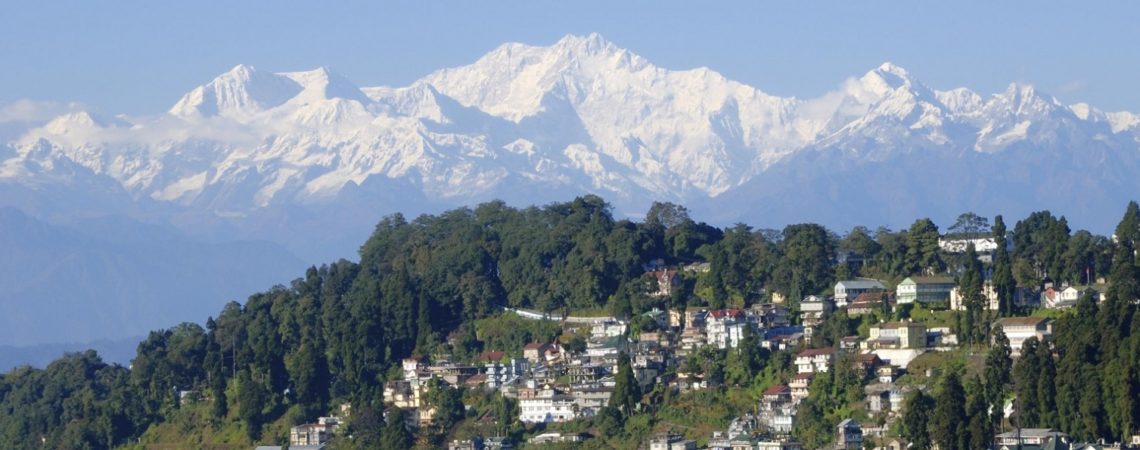Kurseong is a hill station and sub-divisional town in the Darjeeling district of the Indian state of West Bengal.
Located at an altitude of 1,458 metres (4,783 ft), Kurseong is 32 kilometres (20 mi) from Darjeeling and has a pleasant climate throughout the year.
Kurseong is 47 kilometres (29 mi) from Siliguri and is connected to the city by road and the Darjeeling Himalayan Railway. The nearest airport is at Bagdogra and the nearest major railway station is New Jalpaiguri [NJP], which is about 53 kilometres (33 mi) from the town. The economy is based primarily on education and tourism.
The original inhabitants were the Lepcha people, who named their home “Kurseong”, because every spring it was alive and bright with Kurson-Rip orchids. In the remote past, Kurseong was a part of the Kingdom of Sikkim, even before the British came to India. However, in around 1780 the Nepalese conquered and annexed Kurseong and its surrounding areas. Then came the Gurkha War, which the Nepalese lost. The 1817 Treaty of Titalia restored Kurseong to Sikkim.
With its mountains providing a cool and dry environment in the summer, Kurseong was a favourite of the British. Nevertheless, they found travelling there from the plains of Bengal difficult, even on warm sunny days because of the mountains. Although a road was built from Kurseong to Darjeeling from Titalia in the 1770s and 1780s, its irregular maintenance soon made the new route, the Military Road, almost useless. The next route, Hill Cart Road (now Tenzing Norgay Road), opened in 1861 and fared better.
Nevertheless, in 1835 the British decided that Darjeeling would make an excellent sanitorium and summer residence for their military and civilian officers along with their families. Negotiations with the Chogyal of Sikkim, Tshudpud Namgyal, provided them a strip of hill territory in Kurseong for an annual fee. As one of the hill stations on the road to Darjeeling, Kurseong began to develop.
Kurseong is home to one of the oldest municipalities in the state of West Bengal. Established as an independent Municipality in 1879, it did not become a Sub-Division until 1890, when the District of Darjeeling was formed. Kurseong and the District were added to the Rajshahi Division (now West Central Bangladesh) by the British Raj for the Bengal Presidency. In 1908, they were transferred to the Bhagalpur Division in the same Presidency.
Before Independence from the British, there were 12 ward commissioners. Four of them were appointed by the British Raj and it also appointed its own man, the Sub-Divisional Officer (S.D.O.), as their Chairman. In 1939, when Bengal became a province of British India, Kurseong was allowed to elect its own member to be the chairman, but the Raj continued to send ward commissioners until India gained independence. Nevertheless, between 1939 and 1942, Kurseong grew rapidly. As of today Kurseong has 20 commissioners.
Communication :-
Kurseong is considered as Mid Point between Siliguri and Darjeeling. The nearest airport is the Bagdogra Airport and nearest major railway hub is New Jalpaiguri Railway Station. Kurseong is well connected to Siliguri, Darjeeling and Mirik. Several prepaid vehicles run from Kurseong to Darjeeling, Siliguri and Mirik. But Kurseong does not have a strong transport connection to Kalimpong and Gangtok. Only 2 vehicles to Gangtok and 1 vehicle to Kalimpong run from Kurseong everyday. Taxis also run to Pankhabari, Ambootia, Mahanadi, Tindharia, Latpanchor. North Bengal state buses also run from Darjeeling to Siliguri and NJP Station via Kurseong.
Kurseong also has a railway station where Toy Train runs to New Jalpaiguri and Darjeeling. Kurseong Station is a part of Darjeeling Himalayan Railway and comes under Katihar Division of Northeast Frontier Railway.
There are three roads between Kurseong and Siliguri: National Highway, Pankhabari Road and Rohini Road.



